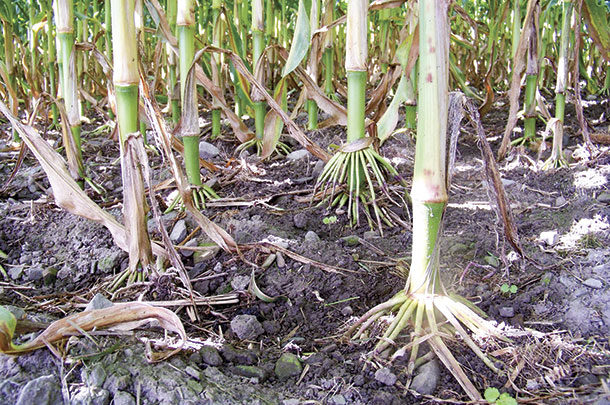Jordan, who joined the farm in 1974, has been an instigating force in this change, seeking to implement cropping practices that improve soil health.
The contrast in farming systems employed over the years forms the narrative of Table Rock Farm’s “Journey to Soil Health,” a workshop given by Jordan at the 2017 Operations Managers Conference, presented by Cornell University’s PRO-DAIRY Program and the Northeast Dairy Producers Association.
Clay soils left “big, hard chunks when plowed, like rocks,” Jordan said. “We were losing soil. Every time it rained, we’d get major washouts. Nowadays, we like clay. It works very well with our system.”
Years of repeated plowing and harrowing of corn fields resulted in barren soils with severe erosion concerns. Today, year-round cover cropping, zone tillage or no-till practices, along with precision applications of manure has increased soil organic matter and led to increased crop yields, as well as crops that withstand drought pressures. Soil erosion is no longer an issue.
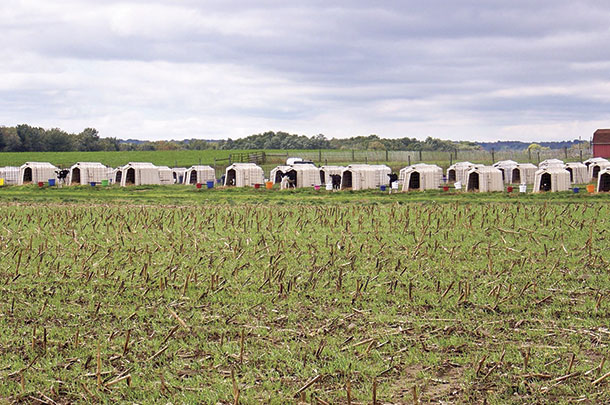
“Healthy soils are resilient and they support farm and environmental sustainability. Two key goals are to reduce soil disturbance and increase soil organic matter,” moderator Karl Czymmek, Cornell University senior extension associate, PRO-DAIRY – Field Crops and Nutrient Management, said. “Improving soil health is a journey that every farm can focus on and benefit from doing.”
Changing practices
The farm began to change its practices, planting corn in 15-foot- wide rows, back in the mid-1990s, with some increase in yields. But they were still using the plow and harrow. Next, they added zone tillage, using a unit with a zone builder to rip up compacted soil.
This reduced-tillage method left the soil surface untouched but loosened the lower levels, providing enhanced root growth and improved soil surface texture, Jordan said. These zone-tilled fields yielded well. Harvesting the corn the first few seasons was problematic, due to rough and uneven ground.
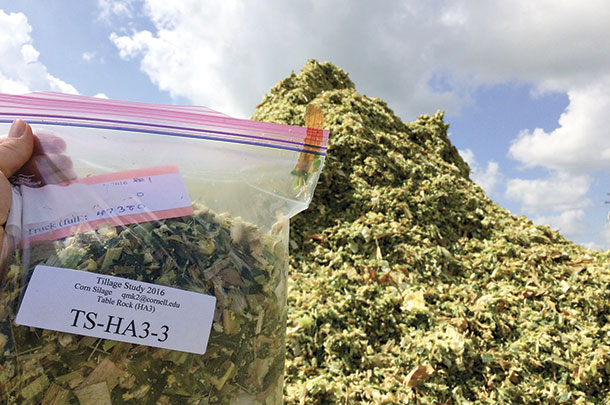
But the benefits of increased yields, reduction in labor needed in field preparation and decrease in fuel use over the plow and harrow system, along with the ongoing positive changes in the soil tilth, led them to fully implement zone tillage. After experimenting with test plots for two years, the farm adapted the practice and stopped plowing completely in 2003. They sold the plow in 2005.
They soon added a vertical-tillage unit with a rolling basket, which provides “a uniform surface to plant into, without variation in the texture of the soil,” Jordan said. The use of vertical tillage enhances water and air movement within the soil.
They’ve also decreased the depth of zone tillage, reducing the wear and tear on the equipment without reducing yield. They now zone-till to 7 inches, unless the ground is compacted, in which case they employ the previous 14-inch depth.
In the interest of continual improvement, they also began to utilize no-till practices. They planted 200 acres of no-till corn after fall-killed alfalfa in 2015. Planting through sod in the first year of no-till experiments yielded very good results.
The farm has a precision planter, with a hydraulic downforce and vacuum meter to “put the seeds down in the right spot in no-till.” The no-till acres are producing well, with “just as much yield off of those” as the fields in the zone-tillage system. “I really like doing the no-till. It just works so well,” Jordan said.
The farm isn’t going completely no-till yet, although that’s where Jordan believes they will eventually be, as the farm continues to evolve. Even on rocky ground, no-till isn’t presenting any problems, he said.
Cover it up
Reduced tillage isn’t the only soil improvement practice utilized on the farm. Table Rock Farm uses continual crop cover, so soil is never left bare. The farm has used cover crops since the 1970s, when they harrowed to incorporate them. Today, all of the 900 acres of corn has a winter cover crop, which is spring-killed, using glyphosate and 2,4-D prior to seeding.
They began using a grain drill to seed the cover crops, and “ever since we’ve been drilling it on. Every seed grows now,” Jordan said. “Every acre of corn gets a cover crop for the past seven or eight years. Our organic matter is coming up.”
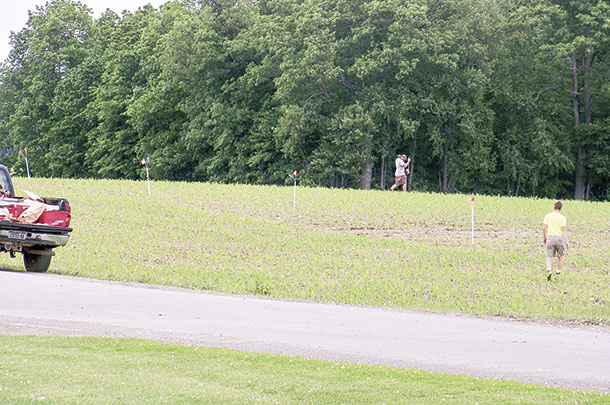
As soon as the chopper harvests the corn, the cover crop seed is drilled in and manure is applied. They’ve used winter rye and “recently began to add oats into the mix.” The front hopper is filled with the oats and the back with winter rye, resulting in “an even mixture when filling the drill.” In 2016, they planted radish in mid-September with good results, and “we may keep doing that,” Jordan said.
They’ve always injected manure to maintain nitrogen. Precision management of manure means fertilizer is rarely needed. Much of the corn does not receive any fertilizer other than manure. The farm is trying to improve manure application and leave a smoother surface on crop fields when manure is applied.
“We try not to run on manure-injected ground,” to avoid compaction concerns, Jordan said. “We try to get out there when it’s a little drier,” which also decreases soil compaction.
Lessons
Table Rock Farm’s ongoing soil health journey involves the willingness to experiment with new equipment and ideas, and to continually improve results.
The farm took over an overgrown field to be planted to canning peas. They didn’t plow. Instead, they first planted corn and rye, and then drilled the peas into the stubble, with very good results. They had no issues with residue when harvesting the canning peas. Jordan can see the difference in the unplowed fields.
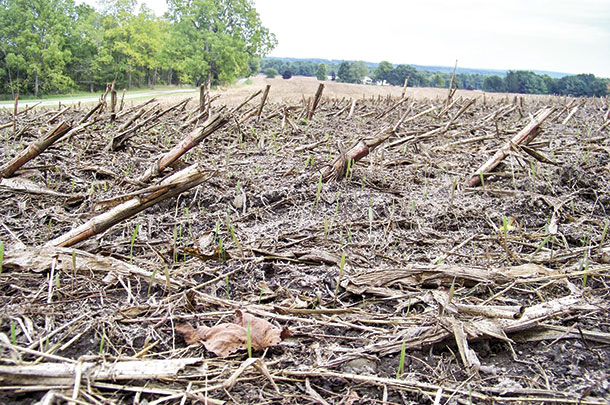
“I think that’s the way to go,” he said. “Our organic matter was maintained in those fields. We didn’t burn it up by plowing it. Less is more. Anything you can do to get rid of that moldboard plow is going to be a plus.”
“The concepts of soil health are fairly simple: If you have manure, get it to as many fields as possible; add plant residue at every opportunity, and burn up less of it by reducing tillage,” Czymmek said. “Like the folks at Table Rock Farm, take it one bite at a time. Pick one or two things to try, get some experience and build from there.” ![]()
PHOTO 1: Healthy soils make healthy crops at Table Rock Farm.
PHOTO 2: Cover crops and calf hutches
PHOTO 3: Sample bag for 2016 tillage study.
PHOTO 4: Establishing test-plot boundaries.
PHOTO 5: Cover crop just emerging at Table Rock Farm. Photos provided by Meghan Hauser.
Tamara Scully is a freelance writer from New Jersey.
